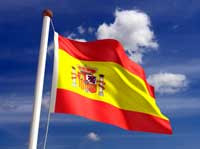
The old legend of the Holy Grail is surely one of the most enduring in European literature and history. The Grail was said to be the cup of the Last Supper and at the Crucifixion to have received blood flowing from Jesus Christ's side. It was brought to Britain by Joseph of Arimathea, where it lay hidden for centuries. The search for the vessel became the principal quest of the knights of King Arthur. It was believed to be kept in a mysterious castle surrounded by a wasteland and guarded by a custodian called the Fisher King, who suffered from a wound that would not heal. His recovery and the renewal of the blighted lands depended upon the successful completion of the quest. Equally, the self-realisation of the questing knight was assured by finding the Grail. The magical properties attributed to the Holy Grail have been plausibly traced to the magic vessels of Celtic myth that satisfied the tastes and needs of all who ate and drank from them.
The Holy Grail first appears in a written text in Chrétien de Troyes's Old French verse romance, the Conte del Graal ('Story of the Grail'), or Perceval, of c.1180. During the next 50 years several works, both in verse and prose, were written although the story, and the principal character, vary from one work to another. In France this process culminated in a cycle of five prose romances telling the history of the Grail from the Crucifixion to the death of Arthur. The Old French romances were translated into other European languages. Among these other versions two stand out: Wolfram von Eschenbach's Parzifal from the 13th century and Sir Thomas Malory's Morte d'Arthur from the late 15th centuryDuring the late Middle Ages, the Grail disappears until the nineteenth century when medieval history and legend awoke the interest of writers such as Scott and Tennyson and of composers, notably Richard Wagner. The symbol of the Grail as a mysterious object of search and as the source of the ultimate mystical, or even physical, experience has persisted into the present century in the novels of Charles Williams, C.S. Lewis and others.
DESCRIPTIONThe Holy Grail is 17 cm high and is formed by a cup, the body (fust) and the foot or base.The cup, carved out of a big piece of agate, is 9 cm in diameter. The body composed of: a) a centred hexagonal column with a round nut in the middle and topped by two small plates, the upper one holding the holy chalice and the lower one supporting the whole base structure; b) two lateral snake shaped handles, hexagonally carved, and c) the garniture of the base, is all of gold.The base is set with 28 pea-sized pearls, two balaxes and two emeralds. The rest of the body is finely carved.The foot or base is composed by an elliptical cup of chalcedony (the same material as the cup). An inscription is engraved on its back which was first read and publicised by the archaeologist Antonio Beltran.ARCHEOLOGICALThe cup is a very ancient work and nothing can be said against the idea that it was utilized by the Lord during the first Eucharistic consecration.The base is as well a very old cup. Perhaps a further study on the inscription would give be a better understanding.It seems that the body contains elements and remembrances of on older antiquity which during the Middle Age were transformed specially on the base setting, at the end of XIV century.HISTORYAccording to some documents, it is evident that the Holy Grail stood at Saint Juan de la Pena Monastery, at least in 1399. On September 26th of the same year, King Martin the Human brought it to the chapel of the Royal Palace at the Alfajeria in Zaragoza (Aragon Crown Archives, Barcelona Collection Martin el Humano, Parchment, 136).Upon the King's death, in September 1410, is was found in the inventory of his properties in Barcelona.In Valencia, Martin V's successor. Alphonse V el Magnanimo, transferred it to his Valencia Royal Palace about 1424.His brother, Dan Juan, King of Navarra, presented it to the Valencia Cathedral on March 14th 1437.From the Valencia Cathedral it was taken out only two times: during the Independence War (March 1809 to September 1813). It was moved to Alicante and then to the towns of Ibiza and Palma de Mallorca, fleeing from possible plundering and during the National Uprising (July 21st, 1936 to April 9th, 1939) it was hidden in Valencia and also in the village of Carlet, thus escaping from destruction or loss.
Until today it is securly kept again, behind armoured glass, in the Cathedral of Valen


No comments:
Post a Comment